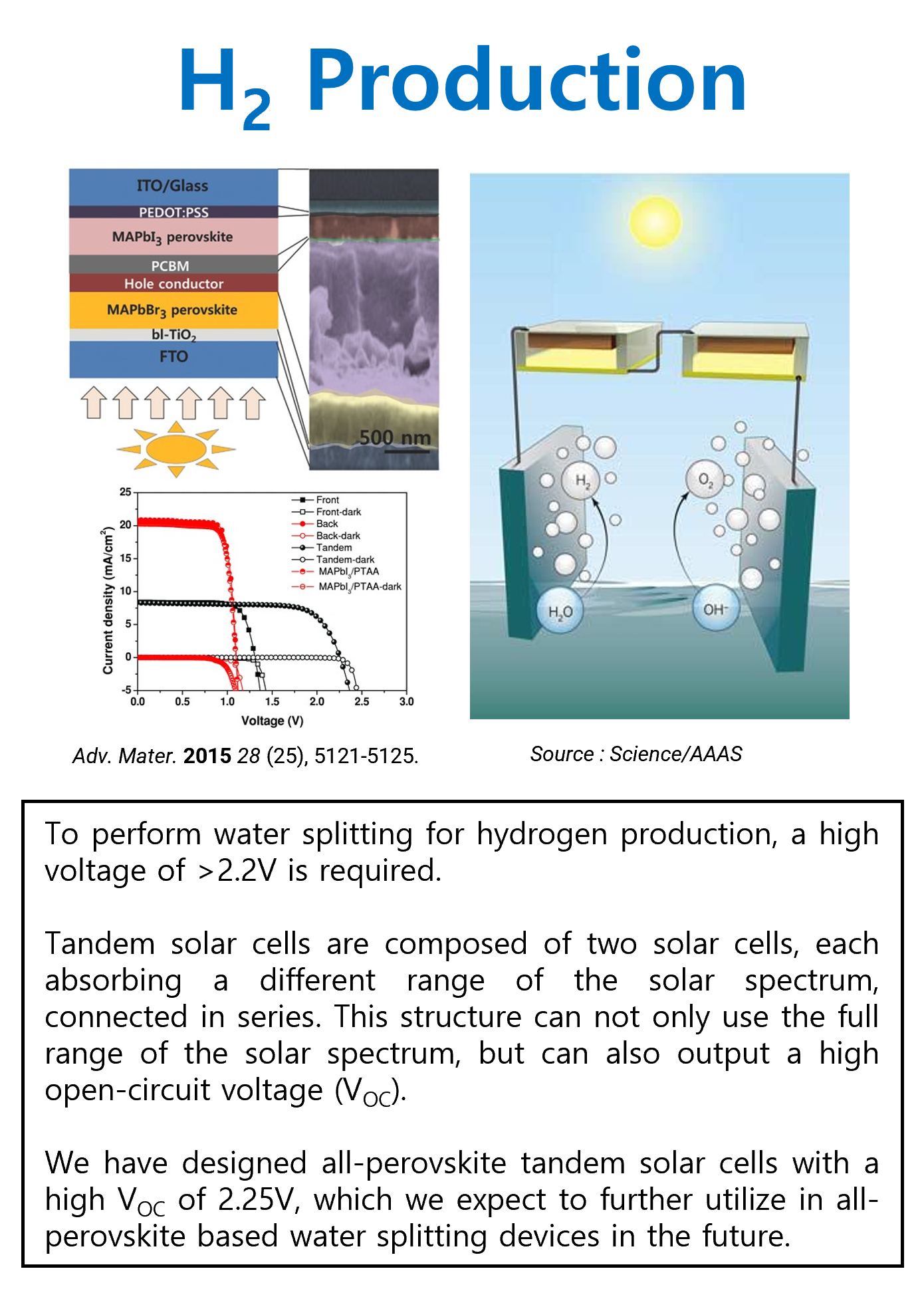
To
perform water splitting for hydrogen production, a high voltage of >2.2V is
required.
Tandem
solar cells are composed of two solar cells, each absorbing a different range
of the solar spectrum, connected in series. This structure can not only use the
full range of the solar spectrum,
but can
also output a high open-circuit voltage (VOC).
We
have designed all-perovskite tandem solar cells with a high VOC of 2.25V, which we expect to further
utilize in all-perovskite based water splitting devices in the future.

 Nano Energy Convergence Device
Nano Energy Convergence Device >Research > Nano Energy Convergence Device
>Research > Nano Energy Convergence Device


 Nano Energy Convergence Device
Nano Energy Convergence Device >Research > Nano Energy Convergence Device
>Research > Nano Energy Convergence Device